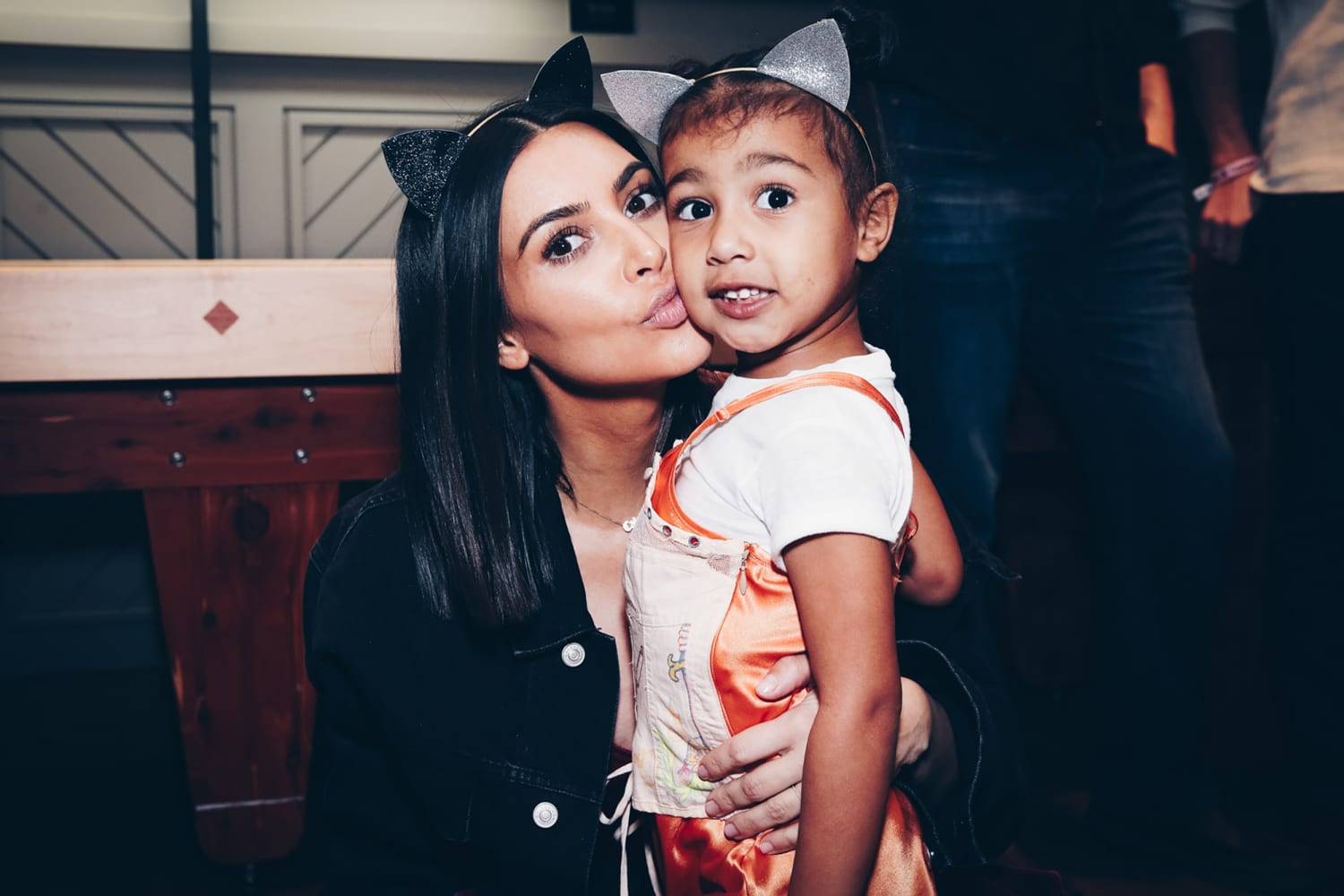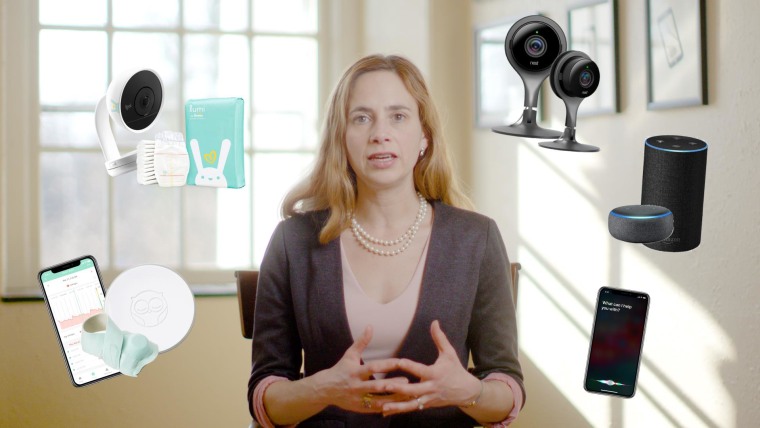Celebrities may have fame and fortune, but that doesn’t mean they’re immune from parenting challenges.
In a now-deleted Instagram post, rapper Kanye West expressed frustration about his 8-year-old daughter, North, appearing on TikTok “against my will.” North’s mother, reality TV personality Kim Kardashian, had created a joint TikTok account for the pair in November, which now has nearly 6 million followers. Kardashian, who is divorcing West, responded in an Instagram story that she was allowing her daughter to “express her creativity in the medium that she wishes with adult supervision — because it brings her happiness.”
Parents and teachers who ignore the importance of social media to youths are missing an opportunity to help children learn how to develop a healthy relationship with it.
The question of how to usher children onto social media is a common challenge facing parents, although most don’t navigate it as superstars in the midst of a deteriorating relationship. But the West-Kardashian case is a useful reminder that, like it or not, all parents must accept that children have digital presences. Parents can think about a social media approach early on or put it off for another day, but at some point, the question will come up.
Putting it off is common. I’ve interviewed parents and teachers about their approaches to elementary-age children’s technology use, and many believe that social media is something to worry about in the future when children are teens. Yet 13 percent of children ages 8 to 12 already use social media every day, and more than a quarter of teens start using social media before they’re 13, according to Common Sense Media. Parents and teachers who ignore the importance of social media to youths are missing an opportunity to help children learn how to develop a healthy relationship with it.
North isn’t unique in her interest in TikTok — it’s where many children, teens and young adults socialize and connect with popular culture. Rather than keep her from it, Kardashian appears to have decided to explore it with her.
“Learning together,” or engaging with media alongside children rather than just monitoring or limiting their technology use, is one of the best ways that parents can support their children in exploring digital spaces. Through this engagement, children can learn the ropes with trusted adults to guide them, and parents have a window into the kinds of interactions their children are having online, better positioning them to deal with any trouble before it escalates.
Of course, Kardashian, who has built a career on media savviness, is equipped to guide North on TikTok in ways many parents aren’t. Nevertheless, parents can still scroll through social media feeds with their children and talk about the kinds of things children want to do on these platforms. Even parents who are understandably hesitant to create joint accounts with children can at a minimum validate their kids’ interest in social media.
It’s important to note that most social media platforms, including TikTok, don’t allow users under age 13 (though many users simply enter false birthdays to get around the rule). Kardashian’s account with North appears to play by the rules, as the account info states that it’s managed by an adult. The account’s 60-plus videos include a mix of North lip-syncing, experimenting with filters and video effects and sharing moments with her mother. Recordings of dolls and games are interspersed with shots of heeled boots and makeup, a reminder that North is beginning the transition from child to preteen.
Where is West in all this? As North’s parent, he deserves a say in what his daughter does online. But I’d encourage him to consider why he’s so resistant to North’s presence on TikTok. Whether she’s growing up in the public eye or not, she’d likely get a social media account at some point. Isn’t it better for her to start with one where an adult has the reins?
To be sure, this kind of gradual exposure to social media won’t prevent mishaps — in December, North livestreamed a video tour of her house on TikTok seemingly without her mother’s permission. North walked into Kardashian’s bedroom and announced, “Mom, I’m live,” to which Kardashian replied, “No, stop, you’re not allowed to.” North giggled, “OK, bye,” before abruptly stopping the livestream.
Mistakes are part of being human, and children absorb what constitutes responsible behavior in part by testing limits and learning where the boundaries are. North’s livestream appears to have been a “teachable moment” for her to learn about keeping family information private.
Too often, questions about children and social media quickly morph into concerns about safety. Protecting children is obviously important, but as internet safety scholar Pamela Wisniewski notes, “there is little evidence that online risk presents more harm than the risks teens typically encounter offline.” While children can more easily access adult material via the internet, harmful situations like cyberbullying, aggressive sexting and online predatory behavior are far from common, and when they do occur, they are typically perpetrated by someone a child knows, rather than a stranger.
Rather than try to prevent children and teens from experiencing negative interactions, Wisniewski advocates an approach that helps children and teens learn how to cope with the negative experiences they will inevitably encounter. And the safest way for parents to do this is to introduce their children into digital environments like social media on the caregivers’ own terms.
This is admittedly much easier when parents are on the same page, and that can be hard to come by even in stable relationships, let alone acrimonious divorces. For families who experience tension surrounding a child’s social media presence, I offer the following advice.
First, take comfort in the fact that you’re not alone. Two-thirds of American parents say parenting is harder now than it was 20 years ago, and that’s in part because parents now have the responsibility of managing their families’ digital disclosures on top of getting kids fed, clothed and out the door each morning.
Second, discuss your thoughts, feelings, concerns and preferences surrounding your children’s social media presence. Make sure to include them in these conversations as much as possible. This means sharing with your children what worries you about social media and inviting your children to share with you what excites them about social media so everyone in the family can understand where the others are coming from.
Finally, come up with a plan for ushering children onto social media that recognizes it will likely involve compromise. This is where having a clear sense of what you as a parent are concerned about can help. For instance, if you’re concerned about visibility, the child can start with a private account, and followers can be approved. If you’re concerned about content, the family can together set ground rules for what kind of information is and is not OK to post.
There’s no one-size-fits-all answer here, since each family has its own unique circumstances and tolerance for drama — public or otherwise. A family’s approach to social media will also evolve as kids themselves grow and mature. What’s important is that parents recognize that children’s social media use is an issue to address, not ignore. Social media is here to stay, and a parent’s job is not to try to control a child’s digital presence but to guide it.
Source: | This article originally belongs to Nbcnews.com











